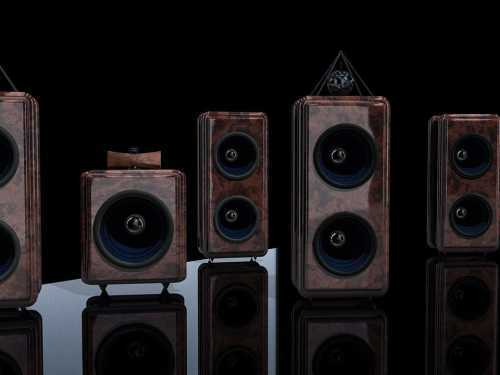
Stereo sound has been widely used in the world for over 65 years, but the quadraphonic sound recording format initially failed. Moreover, this failure was unexpected for all the manufacturers who had invested huge amounts of money in the technology. To understand the reason, let's delve a little into history.
The stereo effect in sound was first used in 1881. At that time, booths were set up for visitors to the Paris Electrical Exhibition where they could listen to opera in stereo using headphones. Two microphones were installed in the city opera and the sound was transmitted separately to two headphones via two telephone lines. Visitors to the exhibition were delighted, but it was not possible to record this sound at that time.
In the early 20th century, experiments were constantly being conducted on recording stereo sound, but all the technologies were too expensive and complex for the mass market.
The first mass-produced stereo equipment was the reel-to-reel tape recorder. In 1955, the American company RCA began producing stereo tape recorders. Three years later, in 1958, they launched the production of stereo phonographs and stereo players, which was the real beginning of the stereo era.
For almost 10 years, stereo and mono existed side by side, without interfering with each other at all. Mono was positioned as cheap equipment for the general public, and stereo as higher quality for those with a thicker wallet.
In the late 60s, manufacturers decided to start producing equipment with quad sound. And they did it not because they were so good and spread culture among the masses, but because of the elementary desire to make money. The calculation was simple: the stereo format was successfully implemented, albeit not immediately and not quickly, but it took root. Just as slowly, quad will take root, and you can sell it even more expensively than stereo.
To record quad sound, 4 channels are required. In a stereo tape recorder, this was already practically the case (2 channels in one direction + 2 channels in the other). A stereo reel-to-reel tape recorder was converted to a quadraphonic one after minimal modifications.
But with vinyl record players, it was much more complicated. There, the sound is cut on the vinyl record in the form of a groove, where each wall of the groove is a separate sound channel. There was simply no room for two more channels. We had to resort to tricks, and this is where the “format war” began.
The Japanese company JVC and the American RCA proposed the CD-4 discrete standard (Compatible Discrete 4 or Quadradisc). The essence of the standard was as follows: a frequency band from 20 Hz to 45 kHz was recorded on each channel of a stereo disc. This band was divided into two parts: from 20 Hz to 15 kHz were the usual front stereo channels, and on a supersonic carrier frequency in the range of 30 kHz, information about the rear channels was “recorded” using modulation.
At the same time, matrix systems were also developed, such as SQ (Stereo Quadraphonic) from Columbia Records and QS (Quadraphonic Sound) from Sansui. Here, information about four channels was encoded into the usual two stereo tracks by means of complex phase shifts. This allowed listening to the record on a regular stereo player, but for full quadro a special decoder was required. The main disadvantage of such systems was the very poor separation of the channels: at first, the attenuation between them was only 3 dB, which made the surround sound effect barely noticeable. Later, this figure was increased to 12-20 dB, but this was still far from ideal.
None of the manufacturers wanted to be left out of the “quadraphonic pie”, and everyone eagerly set about developing and releasing new and new models of quad amplifiers, receivers, and speakers.
Even the inert radio industry of the USSR produced an experimental series of “Phoenix-002-quadro” players, amplifiers and reel-to-reel tape recorders of the highest class “Jupiter-quadro” and even special headphones “Electronics TDK-3 QUADRA”. The amplifier was mass-produced for some time, but the production of the rest was postponed until stable demand appeared.
But demand for quad never materialized. Manufacturers spent a lot of money advertising the “super duper” quality of the new sound standard, but sales were sluggish. There were several key reasons, and they hit the format from all sides:
1. Format War. The lack of a single standard (CD-4, SQ, QS) confused both buyers and recording studios. No one wanted to invest in a format that could lose to a competitor tomorrow.
2. High price. You had to buy a new expensive receiver, often a new turntable with a special stylus, and, of course, two additional speakers. This was significantly more expensive than a stereo system.
3. Weak effects and little content. Many quad mixes were poorly made, with primitive effects like “left-rear guitar solo” rather than creating a realistic soundstage. This did not impress listeners enough to justify the huge expense.
As a result, after almost 10 years of promotion and the release of hundreds of models of high-end equipment, the standard was quietly discontinued.
But does this mean that the idea of surround sound is dead? Not at all. It was simply waiting for its time and successful application.
And that application was cinema. The emergence of Dolby Digital 5.1 and DTS digital formats for home theaters in the 90s changed the situation radically. Unlike quad, which was focused on music, multi-channel sound for films was in incredibly high demand. It became the absolute standard for DVD, Blu-ray, and today for streaming services.
Moreover, the idea of surround music is experiencing a renaissance today. Formats such as Dolby Atmos Music and Sony 360 Reality Audio, available on popular platforms like Apple Music and Amazon Music, allow millions of people to listen to music with a fully immersive experience, often simply through headphones thanks to binaural audio technologies.
So it turns out that the world hasn't given up on the idea of “3D sound” — it's just that in the 70s, the technology and the market weren't ready for it yet.





